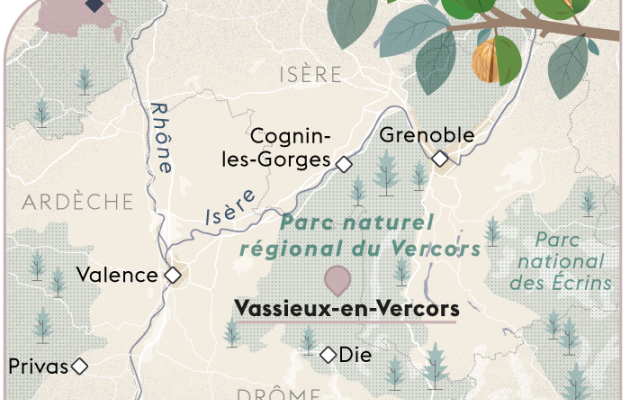The Gorges du Nan can be seen from afar: the notch they draw on the side of the Vercors is so deep that it is obvious before entering the village of Cognin-les-Gorges by the national road, south side . But everything changes at the beginning of the ascent, after the medieval tithe stone, which marks the start of the trail. There, the vegetal vault transforms the path into an intimate stroll. The walls are rarely seen in their entirety in this first part. The higher you go, the more the chaos of round stones of the bed of the Nan form an alternation of translucent pools and torrents bubbling with foam.
Along the way, we see furtively the traces of the old mule track dug in the rock. Ferns are everywhere, including the elegant sea bream, a rare species whose curly fronds look like parsley. Arrived at Malleval-en-Vercors, just below the village, we discover a recumbent lying on its side. Carved in white limestone, it is the monument of remembrance of January 29, 1944, and its sinister list of names. That day, the Germans trapped the guerrillas. Twenty-three of them and nine civilians were killed in the fighting, including six “are burned in a barn”, specifies a stele. Others are shot. Eleven prisoners will be deported; six will not return. The village is completely destroyed by the flames.
Rising 1,000 meters, our path took us from the Dauphiné of walnut orchards and old dryers to the Vercors of the Resistance, the mountains and the plateau. Back in Cognin-les-Gorges, after a 16 kilometer loop and a good six hours of walking, the good idea is… to go back to Malleval, but by road this time. Because the D 22, very narrow and full of hairpin bends, offers a dazzling spectacle. Over more than 20 kilometres, you pass from the dense shade of the forests to the dazzling sun of cornices directly above the void, which winds under stone arches where it is impossible for two people to pass. The slope is sometimes so steep that few cyclists venture there.
It must be said that there is no shortage of breathtaking roads in the Vercors. From the Route des Ecouges to the Route de Presles, via the D 531 in the Bourne gorges, they were dug with explosives and during titanic construction sites at the end of the 19th century.e century. These new roads were of course used to open up the villages of the Vercors plateau to the west, towards the Drôme. But above all, they made it possible to bring wood down from the forests at altitude to the Isère, then to the Rhône, in order to trade in it.
You have 64.04% of this article left to read. The following is for subscribers only.
